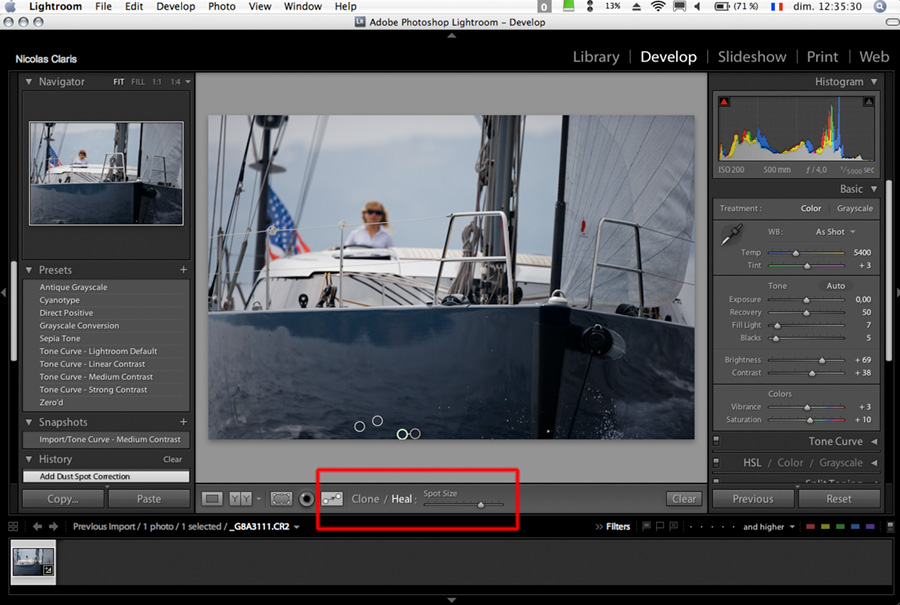I'm pretty sure that nobody here cares a whole lot about my thoughts on the dust issue, but what the heck...it puts me one post closer to being a "senior member."

I shoot vintage car racing, which appears to be fairly unique in this forum, so my experience with dust may be a bit different from that of most of you. I use a Canon 1DMkII and all zoom lenses and, yes, dust can be a real problem for me, but not an overwhelming one. Among the race tracks at which I shoot is Laguna Seca (just outside Monterey, CA). The Monterey Historics, probably the premiere vintage racing event in this country, is held at Laguna Seca in August, and that venue at that time of year, especially at "the Corkscrew" (turn 8) is absolutley filthy. There is little ground cover and the wind whips up and swirls intermittently, speading dust clouds all over the place. Especially if you have to change lenses, and as you move around various locations up there you will, you are going to get a pretty fair amount of dust on your sensor no matter how hard you try to eliminate it. In a typical racing year, I clean my sensor once - after the Historics and before the Coronado Speed Festival, which is held on airport runways (much like the old Curtis LeMay SAC base days), and is, therefore, much cleaner than Laguna Seca but nowhere near as clean as the very green Road America in Wisconsin.
I am in no way, shape, or form what could be called a pixel peeper. My form of photography just doesn't demand that sort of technical over-attention to detail and I am not inclined toward that type of activity anyway. I also do not do this for a living - yes, I shoot for publication and I do get paid by a few small-circulation vintage racing magazines, but money is not my primary motivation, and thank God for that, because mine is not the area in which to try to make a living for most photographers. But I do, of course, try to provide decent photos to those magazines, so I
do care about dust spots and I do remove them in post-processing before sending my files off to the editor. And as the racing season progresses there are more and more of them of the "welded" type to remove. So, the bottom line on the dust issue for me is...
1. I absolutely love my 1DMkII and would not return to shooting film with my 1vHS, even under threat of death. And the MkII does everything I need a camera body to do at this time, so there is no need for me to upgrade in the near future.
2. I understand that in my life, for now at least, dust spots are the primary downside of digital photography. There just aren't any other negative aspects for me, even the added post-processing. Controlling the photos all the way to the CMYK conversion rather than submitting unedited slides is wonderful, and having the originals available during the time between post-processing and publication is even
more wonderful - no more waiting months for my slides to be returned. If a driver wants to buy a print of his race car during that time frame, I am ready and able to provide it. And the most wonderful of all -
no more scanning slides!
3. Dust spots are a definite annoyance because they cause extra work in post (especially after the Laguna Seca race), but that is far outweighed by all the positive aspects of digital imaging.
4. I absolutely
hate cleaning the sensor because of the risk of damage to what is perhaps the single most expensive component of the camera, but I understand that it simply has to be done. I do it myself with a lot of trepidation because I know that driving it 80 miles to Canon Irvine will most likely result in added expense and a job that is no better than mine (if as good). Since the camera is now three years old, warranty is not an issue. I use the spatula, PecPad, and Eclipse method because in my experience that is the only method that really works with the type of dust spots I get. I also have and use Visible Dust's Arctic Butterfly and brushes, but that doesn't do the complete job for me. I use those products as a preliminary cleaning method before I do the wet cleaning to get the "welded" spots (which tend to be the biggest ones), which are not phased by the SensorBrushes.
5. Do I wish the dust problem would go away? Absolutely. Like I said, cleaning the sensor scares the heck out of me and I do it reluctantly but necessarily. If Canon had the perfect dust removal solution with the 1DMkIII, would I spend $4,500 dollars to upgrade? If the dust problem truly went entirely away, probably. But, knowing that isn't the case, I can keep on keeping on with the camera I have, which is very good at doing what it does, until Canon
does come up with the ultimate solution.
6. Do I hate sensor dust? Yes. Do I hate cleaning my sensor? Yes. Do I love digital imaging enough to put up with the hated dust problem? Absolutely.

